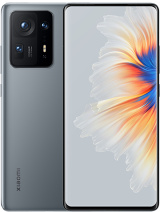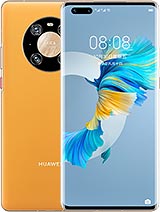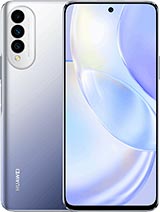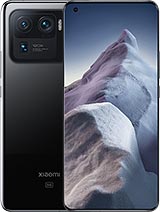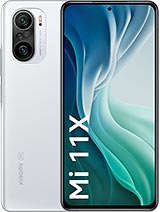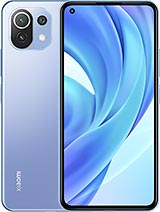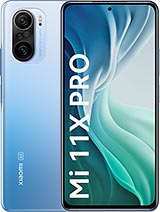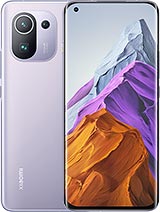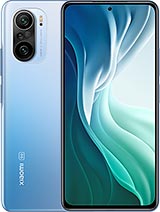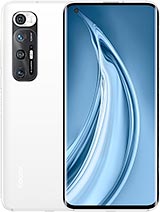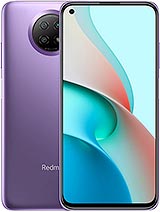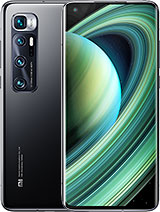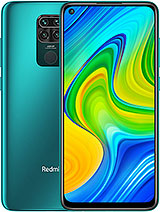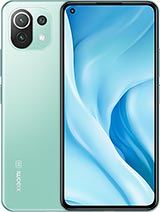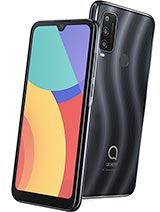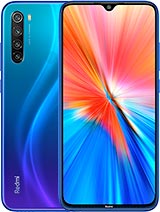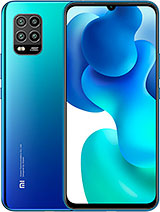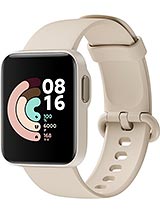Mi 11 Ultra Review - Xiaomi just KILLED Samsung!? By Mrwhosetheboss
So, it really feels like there are two types of flagship phones. Nowadays, you've got one type where the company's kind of decided eh phones are capable enough already, let's focus on design or software or marketing, but then you've got the other type who are like screw that we're putting everything in it enter the me11 ultra. This isn't trying to be a good phone. It's trying to be the best phone money can buy. The box is nothing special but also, more importantly, nothing's missing. It comes with an USB to headphone jack adapter, the standard, clear case and below the phone.
We get an USB charging cable and a 67 watt fast charger. Let's get one thing out the way not everyone is going to like the way this looks. I've showed the m11 ultra to seven eight people now and the reactions have ranged from that's the coolest phone I've ever seen to. Why are those so big to it kind of looks like it's trying to take over the world, and I think the reason it's so polarizing is that this is confident design. It's not trying to be a halfway house.
It's not trying to please everyone. Furthermore, it knows what it wants to look like, in this case, a technological behemoth, and it's running with it. The mi 11 ultra openly leaves elegance and sophistication at the doorstep in place of and I eat, Samsung's for breakfast type, aesthetic, and I think it works. It proudly flaunts its specs. The lenses are enormous.
The camera module itself takes up a literal quarter of the phone, and it actually isn't as much of a nuisance as I was expecting it to be. Yes, it collects dust, you can probably see some up top here, but because the camera module doesn't stretch down that much, it's surprisingly out the way of fingers and because it's so wide instead of worsening the wobble problem. Like a lot of these big cameras, do it solves the wobble problem? Also, this is not glass, they've actually ditched it in place of ceramic, which is often considered to be v-pro material, but I'm not actually completely sold on that. I think I just prefer the convenience of matte glass versus fingerprint city over here, and this phone was already going to be heavy. The density of ceramic pushes it further into one of the heaviest phones.
I've ever used. It's not been an issue for me, but it has been for some of the people who I've handed it to, and god help whoever accidentally drops this on their face one night, but more importantly, is what this phone does. When I first started using the mi 11 ultra, I laughed because after months of phones that just could not match the Samsung Galaxy s21 ultra and who each deserve to cement how special of a phone that is all of a sudden. We have a device that isn't just trying to trade blows and be comparable. Xiaomi is trying to kill Samsung.
So I'm going to show you how, and then I'm going to tell you why to preface this whole thing, though they're about the same price, aka a lot of money. Okay, have a look at the s21 ultra's display. I feel like the word. Phenomenal gets thrown around a lot, but I can't think of many things more deserving of that title. In fact, Samsung's phones have had such good screens that it's kind of just become a bit of a tradition that every time they release a new s-series phone that becomes the best display of the year until their own note series phone comes six months or so later and improves on it.
So it's pretty cool that I can sit here and say: Xiaomi's me, 11 series of phones break that cycle, ironically using a Samsung made panel. These are both a plus 6.8 inch, AMOLED quad HD, plus 120 hertz, gorilla glass, vectors, HDR, 10, plus adaptive panels. How many times did I just say plus, but Xiaomi's, is even brighter maxing out at 1700 nits, instead of 1500 making it the brightest phone display. Possibly ever it's got a 480 hertz sample rate versus 240. That's how fast it's scanning for touches.
It doesn't have that slight blue shift. As you tilt the phone and Xiaomi can display 10-bit colors versus Samsung's 8-bit, it's not actually a 10-bit panel, but it uses a technology that simulates having a greater color depth. It is also quad curved, so it slopes off on both the top and the bottom, as well as the left and the right, I guess, to make gestures, feel a little more seamless, but equally because the only bits that aren't now curved at the corners, I can't shake the feeling that my phone just looks like it had a awful haircut more. Fundamentally, though, Xiaomi has two AMOLED displays, so you might have heard of the band 5 their last generation activity tracker. They have basically taken the screen of that and slapped it on the back of this phone and on one hand, this little thing doesn't really do much that we've not already seen before from those proper dual screen phones, but a's still impressive, that it can do many of those same things, whilst only actually being a side feature instead of the primary gimmick and b by having it on this phone in particular, it enables something that I think has the potential to be a complete game changer, but I'm getting there.
It does also have an amazing customization suite. You can have the time and inspirational quote. You can have your face on there, but it's just strange that they've made it so that it turns itself off after 30 seconds maximum, because am I ever actually going to keep my phone screen down just so that I can check the time by fiddling around to try and double tap this mini display on the back to wake it, probably not, but yeah providing you're okay with the bunny ear corners. I think Xiaomi's killed it with the display, but what about battery? Because the fact that the s21 ultra has got 5 000 William hours of the stuff? It's just meant that I stopped thinking about it and that's a good thing. It's not like.
We ever get positive battery reminders like congratulations, you're still on 90, so the less that the battery is on your mind, the better the battery is doing its job and using this same scale, Xiaomi goes further because it charges faster- and I've said this before faster charging is not necessarily a good thing. It can degrade the battery. It can mean they've got to split one cell into multiple cells, giving you a lower overall capacity, but they've kind of done fast charging here in a way that circumvents its main drawbacks, like you're, still getting the same 5000 William hours of capacity and roughly the same six hours of screen on time in a normal day with all settings maxed out, but instead of having a thicker battery to enable that fast charging, we've actually got a thinner battery thanks to apparently new materials, and as for how much faster it charges well, instead of 70 minutes on the s21 ultra I'm getting 40 on Xiaomi and while with Xiaomi, you can also charge roughly at the same speed. Wirelessly to that takes 120 on the Samsung or three times longer. Now you might know that I'm not a huge wireless charging advocate, and you would have to specifically buy Xiaomi's proprietary wireless charger to get those speeds, but it's tough to argue in Samsung's direction here, even though in all sensors it's charging is slower.
They still don't give you a charging. Brick Xiaomi does oh before I forget, I did check my stats. The other day and 49 of you watching are subscribed.51 of you aren't. So if you are enjoying this video, then a sub to the channel would be electrifying. Let's try and tip that balance.
Okay, you're, probably starting to notice a theme here. It really feels like with the mi 11 ultra Xiaomi has taken Samsung's phone as a template and then literally tried to one-up it in every aspect. Even its speakers sound basically the same just a tiny bit louder, which is subtle, but it's actually just enough of a difference for this phone to be one of the few that can pass the shower test I. e. Can I take it to a shower and still clearly hear the voices in a video that I'm watching Xiaomi's even made it a faster phone? I run the latest an tutu benchmark five times back to back, and you'll notice a few things.
Firstly, that Xiaomi's display does start dimming itself extremely quickly, and you can't turn the brightness up yourself when it does that, but also that in every benchmark, Xiaomi is very clearly ahead, and this is against the better performing snapdragon version of the s21. Ultra Xiaomi does reach a higher internal temperature, but it doesn't seem to affect its ability to sustain performance. Can I tell the difference when playing normal android games? No, not really, but I can imagine that anyone who's looking to buy an ultra phone will probably appreciate the extra three months or so of future proofing that you might get with higher overheads like that besides, while both phones do come by default with 12 gigabytes of fast lpddr5 ram, Xiaomi comes with twice the fast UFS 3.1 storage. Here's the big news, though the number one thing that has kept Samsung in the lead is its cameras. I'll link, my last comparison using it up here, but the crux of it is that Samsung's combination of reliability and versatility are currently uncontested.
Till now see it's easy to look right past the mi 11 ultra cameras; okay, not that easy, they're. Half the size of my face, but the point is its only three cameras: we've got four on the OnePlus 9 pro and that's not exactly considered top tier, but the thing with these three cameras is that each of them is extremely specialized, like this main camera has the largest sensor that we've ever seen on a smartphone, almost 20, bigger than Samsung's already enormous sensor, and this means three things: one incredible separation of foreground and background: it's not day and night over the Samsung, but it's taking great and making it better two more light. If you go into a super dark environment, you will find that its shots look cleaner than the s21 ultras and three cinematic video. This is really more of a byproduct of the background blur. But the point is the benefits of it are far-reaching.
As you can probably see, I could spend a long time talking about this camera system because there is so much going on, but the high level summary is this: for the most part, the Xiaomi mi 11 ultra cameras trade blows with Samsung. This thing can shoot 8k video on all three of its lenses. Even if that is more for bragging rights than anything practical, its slow motion is not just twice as slow, but better quality and its ultrawide camera is supremely wide noticeably more than that of its counterparts, but Samsung's colors are more consistent and for my tastes, better Xiaomi just takes too many liberties with it, and so sometimes shots look, spot-on and then other times I'm like wait did I do something wrong. Xiaomi can often crush darker areas and, whilst having this enormous sensor does mean bright, nighttime shots and beautiful blurred backgrounds in most night scenarios, I wouldn't really say it's better and its plane of focus is so narrow that it can sometimes also mean that part of your foreground is blurred. Samsung has better macro shots with Xiaomi's macro mode, barely able to focus closer than its main camera, and for now at least it's still the zoom champion and, to be honest, it's far enough ahead that it kind of makes Xiaomi zoom feel a little misleading, because I mean technically any camera can be any zoom I want it to be.
I could pull out a passion, fruit and okay, not that I could pull out an iPhone, 4 and zoom in 200 times. If I wanted to I'd, only be seeing like two pixels, but the point is Xiaomi marketing their phone as a 120 times makes it sound like it's better than Samsung's 100 times when, actually, all they've really done is been more flexible, with their definition of a quality photo or in other words, to get the same quality image that Samsung can get at 100 times. This can only really get to about 60. So that's what it should have been labeled as based on 2021 expectations of quality. However, there's one wild card, one thing that is both eureka moment genius and punch yourself in the face.
Frustrating Xiaomi second screen allows you to use all three of these main high-end cameras for the front too. So, while with most phones you're stuck with a single b-grade camera for selfies with the Xiaomi phone, you get the entire rig, so you can take face shots with not just the largest sensor. You can get on a phone right now. This might just be the highest definition. I've ever seen myself in, but also the ultra-wide camera, which, compared to how narrow most front-facing cameras are feels extraordinarily wide.
You get unprecedented low-light performance and crazy zoom too, if you wanted that, but because of how it's configured, you can't take portrait mode shots with this. It doesn't really work in social apps and the only way to take video is through a bit of a workaround, and it's capped at 15 seconds. It's 15 glorious seconds. Don't get me wrong, but why would Xiaomi limit it like this? Why would Xiaomi spend all that money? Designing one of the greatest phone camera systems ever spend all that time. Developing and improving these software modes.
Give you that second screen to be able to utilize them on the front, but then prevent you from doing that everything's in place. The hardware is here the software's here you just can't, and so whilst this would have been a tipping point for me, this probably would have been enough for me to say. Okay, I think Xiaomi's created a better camera system than even Samsung. As things stand, it's about a draw siding slightly with the s21 ultra, because the actual front-facing camera on the mi 11 ultra that you will end up using for a lot of other things. It's pretty meh.
I did talk to a Xiaomi rep about this, and she said that they're pushing for these features internally, so fingers crossed, but I can only review what's actually been confirmed and delivered. However, as you can see from this very rough tally, we've been keeping, Xiaomi has kind of won and that's amazing. The galaxy s21 ultra was the phone to beat, and it's now beat, but I'm also not in the least bit surprised by this result, because I'm convinced that the only reason this mean 11 ultra exists is to beat the s21 ultra. It's as if the entire philosophy behind it was to match every specification and then go further wherever they realistically could. Oh, you've got a 6.8 inch, AMOLED screen with a 1440 by 3200 resolution. So do we, but ours is brighter.
Oh, you've got a five thousand million power battery capacity. Would you look at that? So do we but ask charges faster. You've got 960fps super slow motion. Well, that's cute. We've just doubled that you zoom 100 times we zoom 120.
, you get the idea. This is why my review of the Xiaomi phone has basically just been a comparison to the Samsung, but why? Why is this phone so squarely targeted at them? The answer is Huawei. Two years ago, Huawei was exploding, Huawei was breaking boundaries. They were on track to become the smartphone superpower of the world, but then the US ban happened and as soon as the implications of that and no google services started to come into effect, Huawei fell and that's left Xiaomi with the surprising opportunity to scoop up this enormous chunk of the market. That Huawei is leaving behind to become the global number one, their only obstacle being the more established Samsung who's trying to do the same thing, and so all Xiaomi needs to do is to make sure that they're doing what Samsung's doing, but either cheaper or better and by most metrics it's working apart from camera zoom, which I feel like is mislabeled here.
The byproduct of Xiaomi's, targeted approach is that, of course, you're going to end up with an even higher end, even more extreme phone. I know some people don't like Xiaomi's mini software skin, but this is android providing you can put aside like 20 minutes. You can just uninstall all the bloatware, and you can set up your home screen pretty much how you want it. It wouldn't make sense for me to say: don't buy this phone because I have mixed feelings about me: wise icons. The important things are that it's fast, which it is it's stable, which it has been completely bug-free and ad-free in my experience and that you get good software support, which you generally do with Xiaomi flagships, you'll, probably get two years of major android updates and then quite possibly, four years of me UI and security updates.
I've talked about mini a lot in my past Xiaomi reviews, so I'll link, one of them up here. But fundamentally, if I would summarize it in, like one word, I would say options. There is so much you can do in mini, like even just the display settings are nuts you've got sunlight mode for really bright scenarios, anti-flicker modes sliders for color temperature and even screen texture. You can actually turn it into a paper-like experience if you wanted to so yeah me 11 ultra. This is the new benchmark, but I do think the galaxy s21 ultra still does enough things better, that both have a place.
Samsung has a more sophisticated, aesthetic, and I'd argue a nicer finish. Its fingerprint scanner is not just faster in detection, but also more forgiving, and I would still say that this has the more reliable camera system. Okay subscribe. If you enjoyed. Thank you so much for watching.
My name is Aaron. This is Mr who's, the boss, and I'll catch you in the next. You.
Source : Mrwhosetheboss

